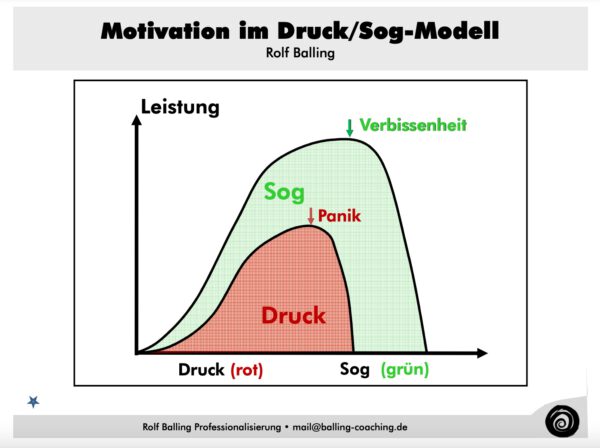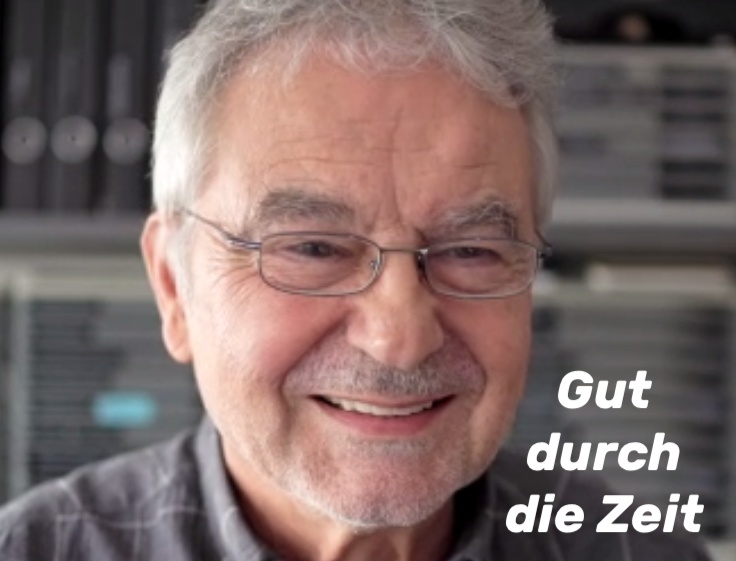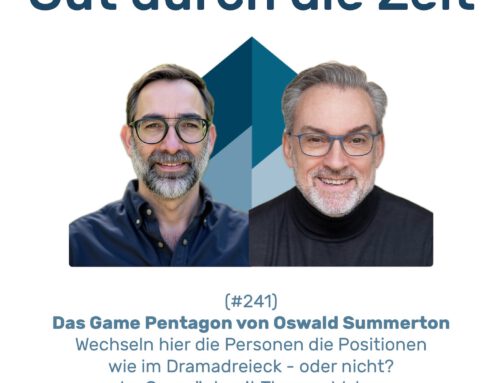INKOVEMA Podcast „Well through time“
#32 – Motivation in organisations.
Motivation im Druck und Motivation im Sog. Im Gespräch mit Rolf Balling
Well through time. The podcast about mediation, conflict coaching and organisational consulting.
Rolf Ballingorganisational consultant and transactional analyst, explains his model of motivating people in organisations. Together with Sascha Weigel, he also explores the question of how the purpose of organisations affects the motivations of the workforce.


Contents:
- Motivation under pressure / Motivation in a maelstrom
- Causality of motivation and performance
- Motivation in time?
- Connection between pressure and suction
- Influence of purpose on the motivational characteristics of the workforce
- Is it possible to change your perspective on your own motivation?
I've always made sure that I enjoy doing what I have to do.
Explanations of the concept:
It has proven useful to distinguish between two qualities of motivation.
- One type of motivation is that a goal or activity itself seems meaningful and satisfying to us. With this type, we feel directly drawn to it; the goal or activity is experienced as "our own". This type is called intrinsic (from within) and is described here as a pull.
- Then there is a type of motivation that is based more on indirectly achieving an attractive goal or averting harm. The goal or activity does not seem directly motivating to us. For example, we might create a report - which seems nonsensical to us - to avoid getting into trouble with our boss. This motivation is called extrinsic (from the outside). We experience it as pressure, and that is how it is presented here.
Discussion of the curves in context: Firstly, it is shown here how the performance develops when the suction or pressure increases. In both cases, there is initially an S-shaped curve, which is then followed by a rapid drop in power.
With Motivation under pressure I call the point from which the performance quickly drops again the Panic point. This corresponds to the experience that - depending on personality and daily form - dysfunctional behaviour patterns quickly increase from a certain pressure level until ultimately no problem-solving actions are taken at all.
With Motivation under suction the performance curve follows the same pattern. However, the curve reaches a higher level overall, as good target bonding releases additional mental energy. But here, too, there is "too much of a good thing". At some point, the point of over-motivation - the point of doggedness - is reached, from which the actual performance decreases again. You then start to overlook open doors or become lonely and lose contact with the relevant environment.
In practice, we usually experience a mixture of pull and pressure. Experience has shown that we can deal well with pressure as long as we still perceive the pull as predominant. If this condition is met, we can experience a task as "our thing" and we feel more like a playmaker and less like a pawn. However, it becomes difficult when the pull and pressure at a high level suddenly disappears (e.g: In a project, the over-motivated project manager is told that the project has lost its strategic relevance, but must nevertheless be completed earlier). The motivation level may then find itself behind the panic point of pressure motivation – without the prevailing pull – and performance collapses.
For motivation in the maelstrom: This form of motivation is similar to falling in love. Ultimately, it cannot be forced by others or by ourselves. However, if it succeeds, it is a great gift, as it releases a great deal of psychic energy. However, if a pull project breaks down prematurely, it is again necessary to grieve in order to psychologically detach ourselves from it. And only when we are free again internally can we commit to a new project.
What can be deduced from this for management practice?
- A department will function well if employees are motivated by pull rather than pressure. Pressure may be necessary at the same time or alone, but should not come too close to the panic point of each individual employee.
- In order to promote motivation with pull, a boss needs the expertise of a "matchmaker" who has a good sense of which of his "brides" an employee could "fall in love" with. Of course, the work has to be done, at worst without much pull and - as a second-best solution - rather with pressure.
- The boss needs a feel for the individual - fluctuating - motivation levels of his employees. Some "employees" who are no longer ready to fall in love probably need a well-measured amount of pressure. Another needs support because he is on the verge of panic. And yet another, who is more likely to be over-motivated in the maelstrom, needs to be protected from himself or herself in order to ensure a good result for the department.
- Overall, the importance of a good team atmosphere becomes clear. Because this is where pull-motivated players can unload momentary frustration in order to stabilise their feeling of being playmakers. And even those who are more motivated by pressure can build up their own pull motivation in a pull atmosphere, even if this "only" consists of being needed in the team.
Left:
- Rolf Balling's website: https://www.rolf-balling.de/




Leave A Comment